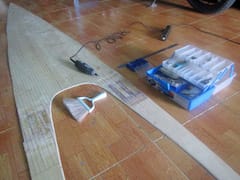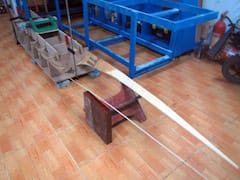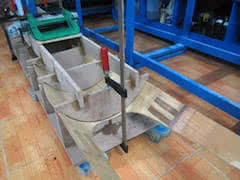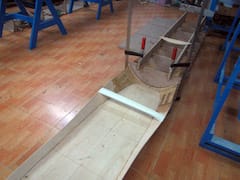 he deck is stained in a light – yellow color, compared to my previous boats, this kayak would receive a much lighter color scheme. Light, bright color would reveal more the defects on plywood and my building mistakes, but I don’t really care about that anymore, as soon as the faults are not too obvious. Then a thin layer of glass throughout the deck (first image). Next comes various deck fittings.
he deck is stained in a light – yellow color, compared to my previous boats, this kayak would receive a much lighter color scheme. Light, bright color would reveal more the defects on plywood and my building mistakes, but I don’t really care about that anymore, as soon as the faults are not too obvious. Then a thin layer of glass throughout the deck (first image). Next comes various deck fittings.
First are the cleats used to tie down the hatches’ lids. These wooden cleats are glued on, then bolted down with 2 small bolts for each cleats. I carefully fill the bolts’ holes with epoxy, then paint the internal side with some epoxy to prevent water leaking in. Tying down the hatches’ lids with lines is not a very handy way, but it’s simple and very secured, compared to other complex locking mechanisms.
Last image: the rudder control lines’ tubes exit the deck near the stern, secured by 2 small wooden blocks, and protected by 2 cable glands to make the deck completely watertight. On the other ends of the tubes are similar cable glands inside the cockpit. I also made 2 “double – ended” wooden cleats to micro – adjust the rudder control lines’ tension. Various other wooden parts are also fitted on the deck.
The progress slows down as I approach one of the last major phase of the project: electricity. This is a complex issue, the kayak would have a 7W solar panel, which charges into a 2.2 Amph SLD (Sealed Lead Acid) battery. The battery is used primarily is for powering the boat’s bilge pump, and secondarily, to charge various electronics devices: the iPhone, Garmin, VHF radio GoPro, camera, the compass’ and signal lights, etc…

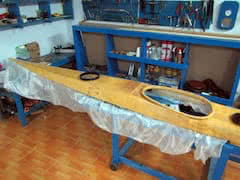
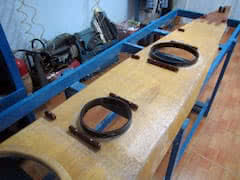
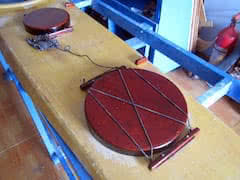
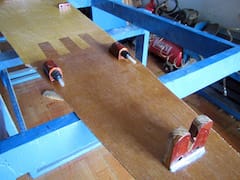

 irst image: the 6 – mm diameter plastic cable glands, with a cigarette lighter for size compare. These cable glands are used at various places on my Serene – 2 kayak, but primarily used for running tubes, cables through hull. With proper installation, they should be waterproof, with the extra help of some silicone glue. Second image: the rudder control lines’ tubes, running through 4 cable glands each all the way from the cockpit.
irst image: the 6 – mm diameter plastic cable glands, with a cigarette lighter for size compare. These cable glands are used at various places on my Serene – 2 kayak, but primarily used for running tubes, cables through hull. With proper installation, they should be waterproof, with the extra help of some silicone glue. Second image: the rudder control lines’ tubes, running through 4 cable glands each all the way from the cockpit.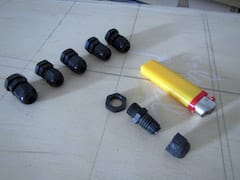
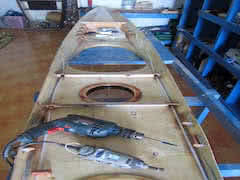
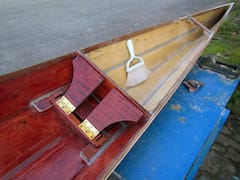
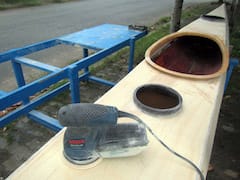
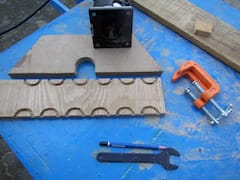
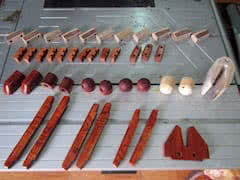
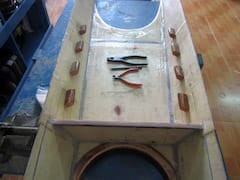
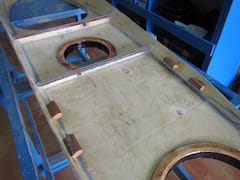
 nstalling the cockpit coaming and hatches is quite straightforward: the fore and aft hatches, and the day hatch. Then I bevel the deck’s jointing seams (the external side) a bit, as well as the cockpit coaming, the seams need to be curved in order for glassing to go on well. Glassing the cockpit coaming could be a little bit tricky, as the fiber fabric should wrap around and cover both the internal and external sides.
nstalling the cockpit coaming and hatches is quite straightforward: the fore and aft hatches, and the day hatch. Then I bevel the deck’s jointing seams (the external side) a bit, as well as the cockpit coaming, the seams need to be curved in order for glassing to go on well. Glassing the cockpit coaming could be a little bit tricky, as the fiber fabric should wrap around and cover both the internal and external sides.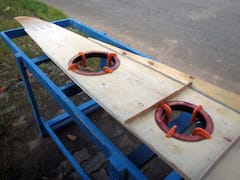
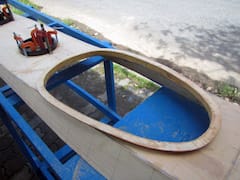
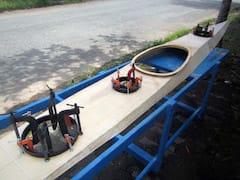
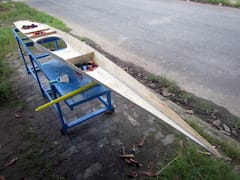
 ontinue working on the new deck! The deck has 3 bulkheads of its own, corresponding to those of the hull. The two rudder control lines would run inside plastic tubes, which run through these bulkheads via waterproof cable glands. But that would be later, first is installing the cockpit coaming, which is just a thin plywood strip bending around a MDF frame. The coaming lip is also cut from plywood.
ontinue working on the new deck! The deck has 3 bulkheads of its own, corresponding to those of the hull. The two rudder control lines would run inside plastic tubes, which run through these bulkheads via waterproof cable glands. But that would be later, first is installing the cockpit coaming, which is just a thin plywood strip bending around a MDF frame. The coaming lip is also cut from plywood.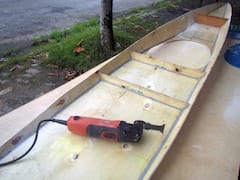
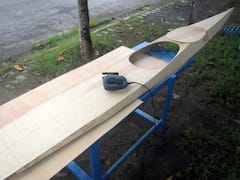
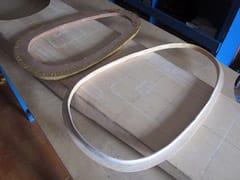
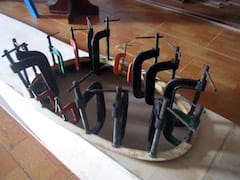
 major setback in the building progress, the curved deck didn’t come out with my expected quality. After released from the molding frame, the deck slowly bend back from its curved shape, especially amid of the boat, off from the desired geometry by 3, 4 cm (first image). That’s really bad… 😢😢 I made a hard decision to discard the rounded deck, and build a hard – chined one (like my previous kayak) instead!
major setback in the building progress, the curved deck didn’t come out with my expected quality. After released from the molding frame, the deck slowly bend back from its curved shape, especially amid of the boat, off from the desired geometry by 3, 4 cm (first image). That’s really bad… 😢😢 I made a hard decision to discard the rounded deck, and build a hard – chined one (like my previous kayak) instead!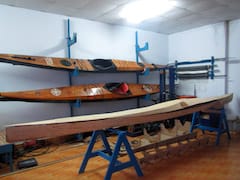
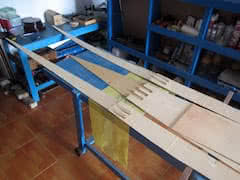
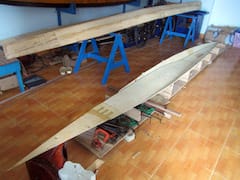
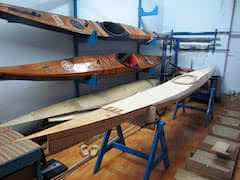
 ith my Dremel – Multi – 3000 tool, I made lots of parallel cuts onto the deck internal side (see the first image), the cuts are about 1.5 cm apart, and about 1 ~ 1.5 mm deep. Those are not very deep cut, since the plywood is only 4 mm (3.75 mm to be exact). Then I soak the deck with water thoroughly, for the ply to be softened, then put it into the frame and press it down… with my body weight (just sit on it) 😀.
ith my Dremel – Multi – 3000 tool, I made lots of parallel cuts onto the deck internal side (see the first image), the cuts are about 1.5 cm apart, and about 1 ~ 1.5 mm deep. Those are not very deep cut, since the plywood is only 4 mm (3.75 mm to be exact). Then I soak the deck with water thoroughly, for the ply to be softened, then put it into the frame and press it down… with my body weight (just sit on it) 😀.